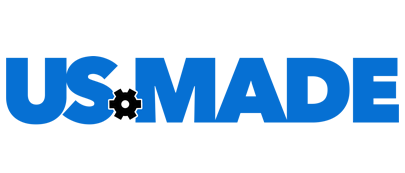In the past, productive, innovative companies found themselves in years-long, costly patent lawsuits facing accusations of infringing on weak or invalid patents. Many companies were – and still are – sued by shell companies that produce no goods or services and had no employees themselves.
Congress passed the America Invents Act (AIA) in 2011 to help reduce the explosion of abuse occurring in our nation’s patent litigation system. Congress wanted to strip the shell companies – ‘patent licensing entities’ who existed only to file these lawsuits – of the bad patents they used to fuel their litigation.
For the first several years of its operation, the system Congress created to eliminate bad patents worked well. An efficient, inexpensive new system to review questionable patents was put in place, and as the ‘worst of the worst’ patents were invalidated, the number of these reviews sought annually dropped. More importantly, the explosion in patent lawsuits subsided and started to decrease, and the number of those suits brought by patent licensing entities started to drop as well.
Unfortunately, over the last year, the US Patent and Trademark Office (USPTO) under Director Andrei Iancu made a radical course change with regard to this procedure for getting rid of bad patents called the inter partes review (IPR). Director Iancu has been engaging in a series of actions aimed at cutting off access to the review process in a way that seems diametrically counter to the very reasons Congress passed the AIA.
Through a series of ‘precedential’ rulings, the USPTO Director (and hence the Patent Trial and Appeal Board (PTAB) judges) has created a series of administrative and procedural rules that has led to even the most meritorious review requests (called “institution requests”) being denied – without ever considering the merits of the case itself. Worse yet, Director Iancu has put these new roadblocks in place without any opportunity for public comments, with no formal rulemaking process and with no ability to appeal for judicial review. US*MADE recently joined 14 other leading think tanks and industry associations in protesting these actions.
These changes are already leading to harmful but unsurprising results: patent lawsuits are once again on the rise and in particular, lawsuits brought by patent licensing entities that produce no goods or services have exploded.
In late August, some of the nation’s leading companies took the rare step of filing a lawsuit against the USPTO to stop the agency from thwarting the purpose of the AIA – to restore access to the efficient review of invalid patents. That lawsuit is now pending.
These new PTAB decisions are illogical and run directly counter to the intent of Congress. IPR allows only the most truly questionable patents to get a second look to see if they should have ever been granted in the first place. With only 8,500 patent examiners to review nearly 650,000 patent applications every year, it certainly makes sense that a few bad patents could slip through the cracks.
Before Congress created the IPR, the only way to adjudicate a patent infringement case was in the federal District Court. This could take five or more years and cost millions of dollars – even to win. An IPR takes 12-18 months and often costs under $1 million. While hardly inexpensive, it is a far more efficient and cost-effective way to invalidate the most unquestionably bad patents.
The IPR process is conducted by three PTAB judges. If a party requests an IPR for a patent, there is a two-step process for moving toward a review of the patent: first, the PTAB judges decide whether the IPR request has potential merit. If it does, they then ‘institute’ the IPR – or move the process to the second step – which is an actual trial over whether the patent should be invalidated or not. If they do not ‘institute’ the IPR, the process ends there.
Since passing into law, the IPR has worked very well. It is used judiciously: Of over 3 million patents currently in force, under 1,000 were partially or entirely invalidated by an IPR last year or the year before. Yet when IPRs do find patents to be invalid, their findings are upheld on appeal 9 in 10 times.
We applaud the effort by the companies who filed the APA case questioning the validity of the recent line of decisions by the PTAB put into place under Director Iancu and look forward to returning to the IPR process as set out by the America Invents Act.
Beau Phillips is Executive Director of US*MADE, a coalition of manufacturers working to protect U.S. employers from abusive patent litigation.
See: PDF
